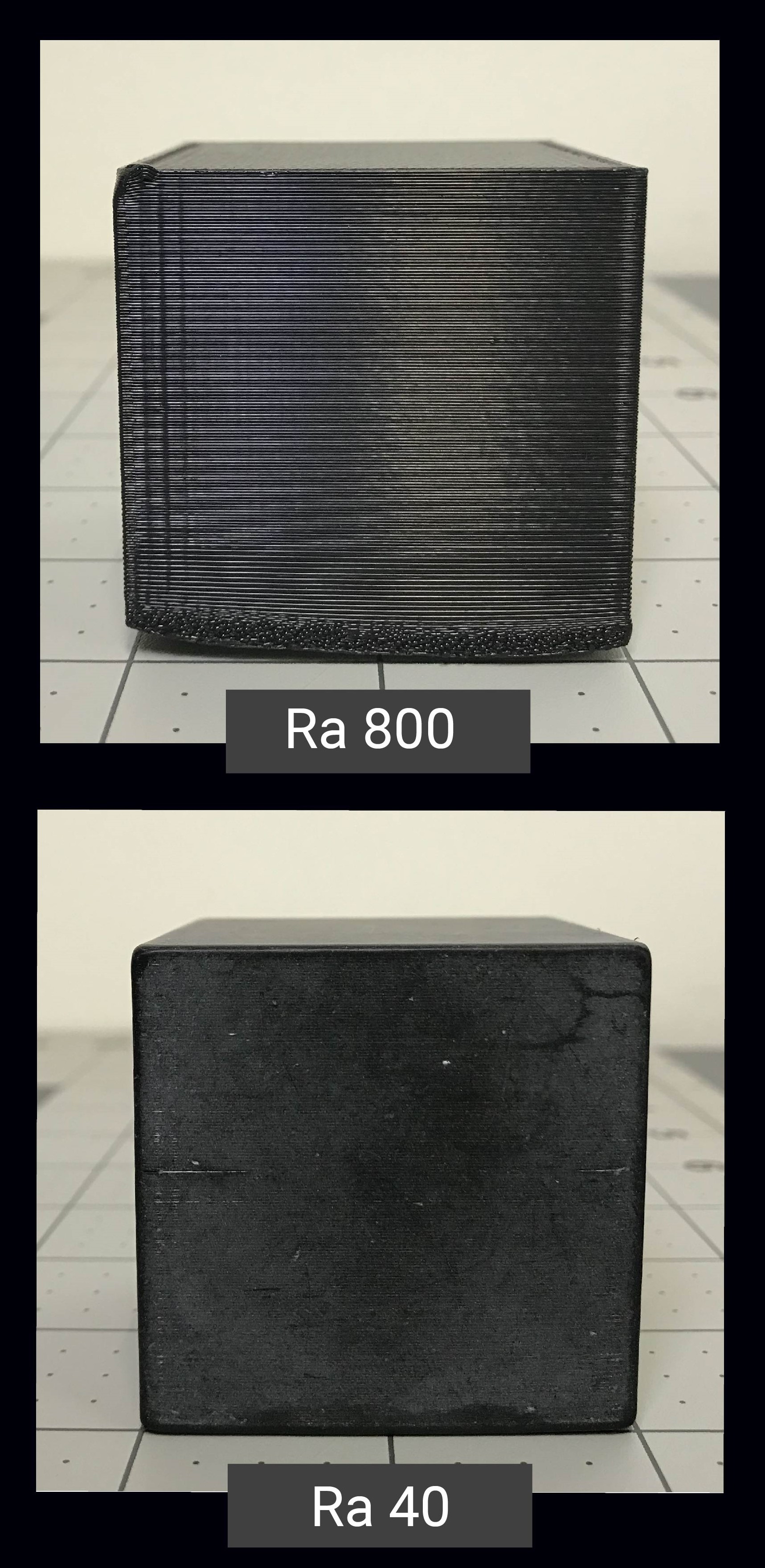 Who loves spending hours hand-sanding parts? After seeing a 3D printer bring a design to life with little to no manual intervention required, this tedious post-printing step seems counterintuitive. Often times, modeling or prototyping personnel are required to achieve a very high level of surface finish quality on additive manufactured parts. Sometimes referred to as “class-A” or “mirror finish”, this level of smoothness is realized through a laborious process using many different grits of sandpaper and literally hours of a technician’s time that sometimes results in very inconsistent end parts.
Who loves spending hours hand-sanding parts? After seeing a 3D printer bring a design to life with little to no manual intervention required, this tedious post-printing step seems counterintuitive. Often times, modeling or prototyping personnel are required to achieve a very high level of surface finish quality on additive manufactured parts. Sometimes referred to as “class-A” or “mirror finish”, this level of smoothness is realized through a laborious process using many different grits of sandpaper and literally hours of a technician’s time that sometimes results in very inconsistent end parts.
Taking FDM models with obvious build lines and processing in large batch quantities resulting in unnoticeable build lines in a few hours of unattended run time and a few minutes of technician time is indeed possible. Moving away from tedious hand-work, PostProcess’ software-driven, intelligent surface finishing solutions and finishing consumables can help get close if not completely to that prized “class-A” finish, eliminating the first several post-printing steps.
Imagine if there was a machine that a technician could simply put a batch of freshly printed parts into, turn on, and in a matter of hours (unattended) could have parts representative of a 300-400 grit sanded finish. The good news is that such an automated machine, or rather, a suite of machines, does exist. One of the more popular versions in our surface finish family is our RADOR surface finish solution.
Using a modern take on vibratory action and with intelligent software controls, PostProcess is able to mitigate hand-finishing labor hours and cost, leaving a freshly printed part undamaged and sufficiently prepared for the final high-level fine finishing needed to create realistic models and prototypes. The FDM example shown here, printed with a layer height of 200 μm, demonstrates the initial surface finishing process achieving an Ra reduction from 800 to 40. This batch of parts is now ready for the final step of dying, painting, or even plating.
Time is one of the most precious commodities for a technician in any manufacturing operation. Freeing up some of these valuable labor hours for higher-value tasks is one of the most important advantages of automating the finishing process. We’re focused solely on additive manufacturing, so contact us today to talk about optimizing your post-printing for any print technology.
<- Return to Blog Homepage